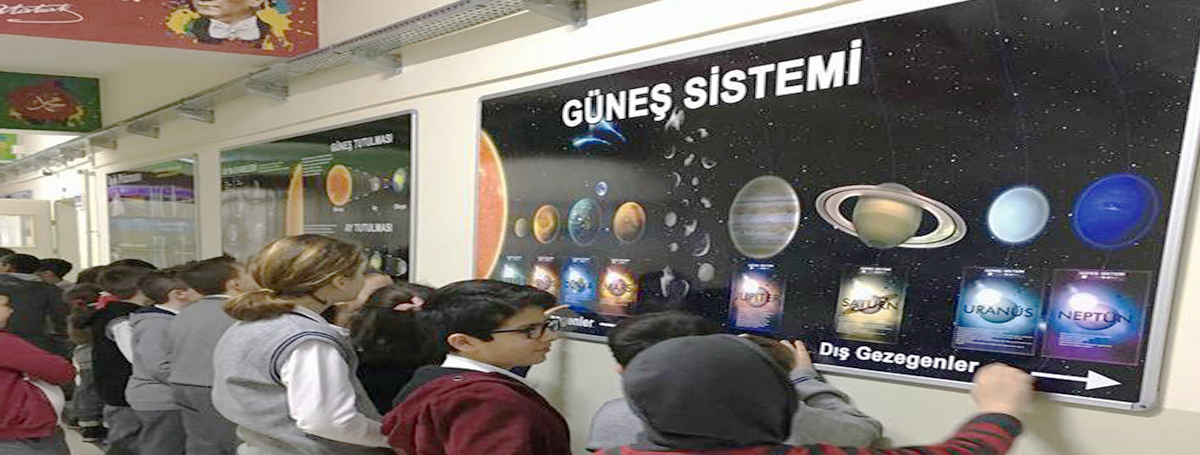
Throughout the Ottoman Empire, a key objective of education was to raise 'good Muslims'. Hence there was a need for Islamic scholars, which was sustained through Islamic Theology Schools, called Madrasa.In 1913, the Medresetü-l Eimmeti vel Hutaba (School of ministers and preachers Medresetü-l Vaazin were combined to form the tangible origins of today's Imam Hatip high schools
In 1924, the Tevhid-i Tedrisat (Law of Unification of Educational Instruction was passed, changing the existing, mostly sectarian academic system with a nonreligious, centralist and nationalist education one. The new law brought all universities under the control of the Ministry of National Education. A Faculty of Theology at the Darülfünun (Istanbul University), unique schools for training imams and hatips (ministers and preachers) were opened by the new Ministry of National Education. However, in 1930 İmam Hatip schools were closed and 1933 the Faculty of Divinity was eliminated.
In contrast to the solely secularist nature of the education policy of the Republican politician Individuals's Party (CHP) religious education was renewed in 1948. This consisted of the facility of a Professors of Faith at the University of Ankara in 1949. Very first steps for the facility of Imam Hatip schools started in 1951 under the Democrat Celebration government, which set up 7 unique secondary schools (Imam Hatip Okulları). In addition, in 1959 Islamic Institutes were opened for graduates of Imam Hatip schools.
Following the coup d'etat in 1960, Imam Hatip schools came across the danger of closure. Following the return to civilian politics and the intro of the new constitution in 1961, graduates of Imam Hatip schools could just enrol in university programmes if they had passed courses provided at nonreligious schools. Throughout the premiership of Süleyman Demirel nevertheless, graduates of Imam Hatip schools were provided access to university without such requirements. The 1971 Turkish coup d'état introduced two crucial reforms: firstly junior high Imam Hatip schools were abolished, and in 1973 Imam Hatip schools were relabelled as Imam Hatip high schools. Under the subsequent National Education Basic Law, Imam Hatip schools were specified as trade schools, where students were to be trained as preachers and ministers or prepared for greater education.
Imam Hatip schools grew slowly at first, but their numbers broadened rapidly to 334 throughout the 1970s. The union government of 1974, developed by the CHP and the MSP (National Salvation Party), dedicated to resume junior highs and offering the right of entry to university through assessment. 230 new Imam Hatip high schools were opened in a period of almost four years. During the 1974-75 academic year the number of trainees taking care of the Imam Hatip high schools grew to 48,895. This number subsequently grew to 200,300 by 1980-81. In addition, women got the right of entry to Imam Hatip high schools in 1976. The expansion of Imam Hatip high schools is frequently pointed out as the effect of the National Redemption Celebration's membership of a variety of unions with Nationalist Front federal governments.
Scenario given that 1980
The coup d'etat of September 12, 1980 is a vital turning point in the history of Turkey and also for the history of Ä°mam-Hatip high schools. Under military governance, graduates of Imam Hatip high schools got the right of entry to all university departments. In 1985, two brand-new Imam Hatip high schools opened, one in Tunceli, despite of the so-called ethnic structure of the region, and the other in Beykoz as an Click for info Anatolian Imam Hatip High School, with the goal of contributing to the education of kids of households who work abroad. Although the number of Imam Hatip high schools had actually not increased considering that, the variety of trainees participating in Imam Hatip high schools has increased by 45%. This is partially due to the improvement in the quality of Imam Hatip high schools and the education provided at such schools.
Throughout the education year of 1973-74, the total number of Imam Hatip trainees was 34,570; in 1997 this number had dramatically increased to reach 511,502. Along with this huge boost in appeal, the variety of schools also increased. The number of Imam Hatip junior high reached 601 and senior high schools 402. The increase in both trainee and school numbers can be associated to elements consisting of the commitment of individuals to religious beliefs, dorm room facilities, scholarships, the admittance of women and a boost in demand for spiritual education.
Research study suggests that between the years of 1993 and 2000, prospective students signed up at Imam Hatip high schools mainly to receive religious tutoring alongside a more general education.In addition, research study shows enrolment at Imam Hatip high schools was based solely on the student's choice. The third proposed element in the increase in popularity of Imam Hatip schools is the admission of female trainees in 1976. By 1998, nearly 100,000 women attended Imam Hatip high schools, making up almost half of all trainees. This fact is especially exposing due to the fact that ladies are not qualified to end up being either priests or ministers.
However, the intro of 8 years of mandatory education in 1997 has seen a sudden decline in the appeal of Imam Hatip schools. In 1999, the reclassification of Imam Hatip schools as "professional schools" meant that, although more options had been offered to graduates, achieving places at prominent university courses became more difficult.By requiring that all 8 compulsory years of education be spent under the very same primary-school roofing, intermediate schools were abolished. Kids could not go into trade schools (among them the Imam Hatip school) until the ninth grade (instead of the 6th, as before).